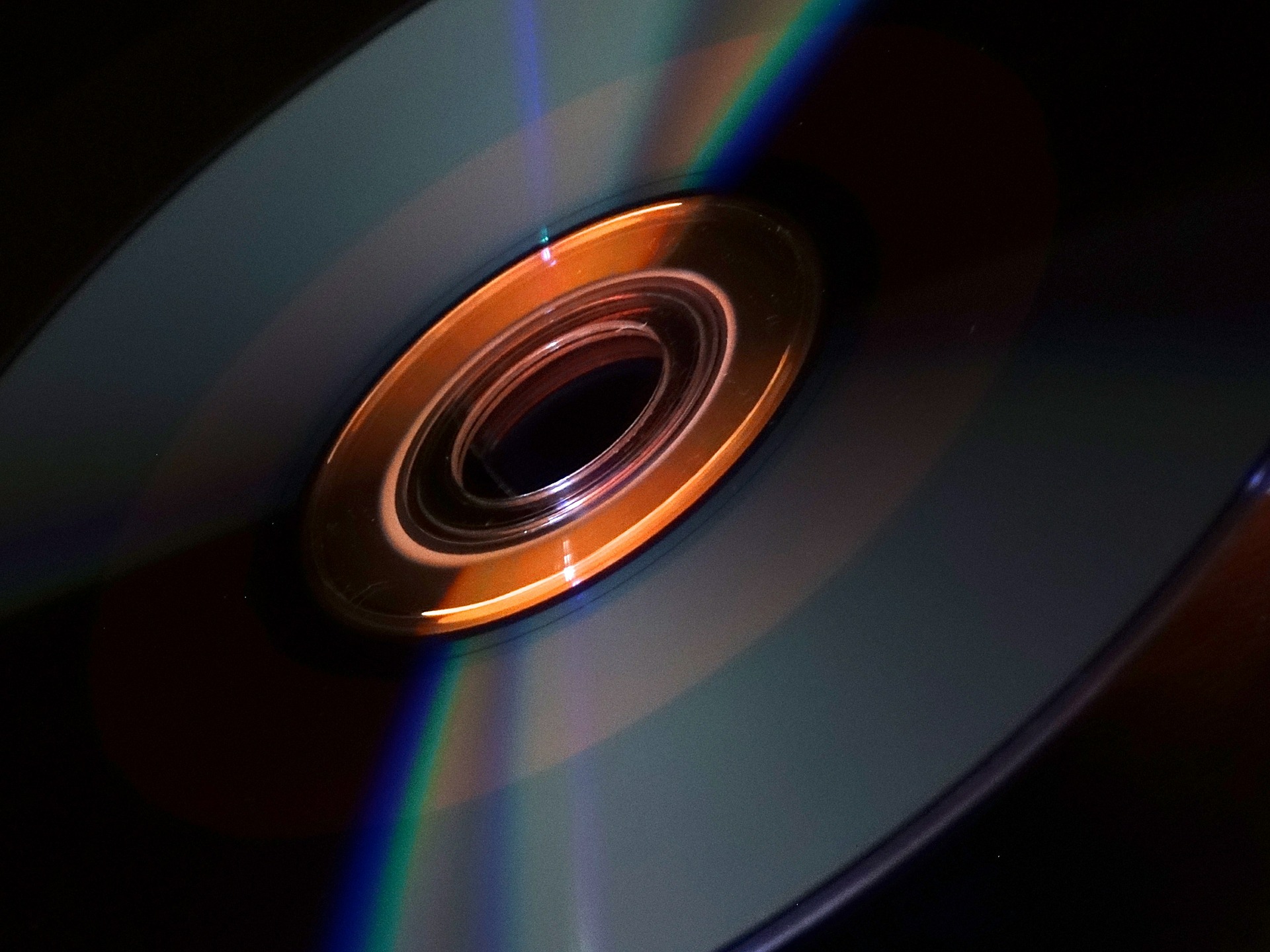Note : This page has been translated into English from French by a machine translation tool
Optical media, also called optical discs, are flat discs whose function is to store digital data. Optical media uses laser technology to write and read this data. It is a high-powered laser during the writing phase which is responsible for engraving tiny cells in the thin metal layer on which the reading sides are covered. A laser beam of much lower power is then used to read this data. It is the wavelength of this laser beam that determines the fineness of the engraving and therefore, consequently, the storage capacity of this medium. This storage capacity can be increased on the same media using double-layer or triple-layer technologies, and these media can have up to six layers of data. Thus, these various metal layers are etched and superimposed, and can then be read by simply changing the intensity of the reading beam, making it possible to multiply the initial storage capacity of the medium by two, three and up to six.
Although these optical media have for some applications been gradually replaced by flash storage media such as external hard drives or USB sticks, you may be confronted in the configuration of a computer with the need to choose an optical media reader/writer if you are still a user. In the event that you need to restore files or work of any kind, you may want to provide it for economic reasons on optical media, which is much less expensive than a flash storage device of equivalent capacity. However, it is more restrictive in terms of accessibility but can have the same advantages. Indeed, these optical supports exist in writable version (+R or -R) that is to say that they form permanent storage supports. Here, the data cannot be erased once written. But they also exist in rewritable version (+RW or -RW). These can be erased and rewritten a very large number of times.
Intéressons-nous maintenant aux différents supports optiques qui existent. Nous en verrons trois…
The Compact Disc (CD)
For the record, the compact Disc also abbreviated CD is an optical medium launched in the early 80’s to replace the LP (or vinyl disc). It was thus initially intended to store and broadcast music. Its storage capacity is generally between 700 and 800 MB, which corresponds to an audio recording time of between 70 and 80 minutes. Among the types of optical media that we will discuss, it is the one with the lowest storage capacity and therefore the fineness of engraving used here is also the coarsest. The CD-ROM is its equivalent in capacity and can be used to store computer data such as software for example. This medium is only used today for music albums because of its too small capacity compared to the current volumes of digital data.
The Digital Versatile Disc (DVD)
The Digital Versatile Disc also abbreviated as DVD appeared in the mid-90s to replace, among other things, the videotape, offering, compared to the latter, an increased comfort of use for the reading of video documents. Its storage capacity is much greater than that of videocassettes but also that of CDs, reaching 4.7 GB for the standard versions and up to 8.5 GB for the double layer versions. There are also rarer double-sided versions, which allow this storage capacity to be further extended to 17 GB. The disadvantage is that the media must be extracted and turned over to read the second side. This support then allows for the storage of movies to include subtitles, several audio tracks and even in some cases several points of view for the same scene. Movies are usually stored in SD (Standard Definition) format. It is also used for marketing albums in DVD audio format so that, thanks to its greater storage capacity, it can further improve the quality offered by CDs. The latter use is still very marginal, however. The DVD-ROM version has also been developed as a mass storage device for computer data, allowing the storage of larger operating systems, games and software.
The Blu-Ray Disc (BD)
Here we come to the last optical media we will present: Blu-ray Disc or simply called Blu-ray. The latter appeared on the market in 2006 with the aim of storing HD (High Definition) films and takes its name from the color of the laser used, whose wavelength corresponds to that of a blue-violet color. It is the media with the highest burning fineness, allowing the storage of 25 GB of data for a single-layer disc. Its storage capacity can reach up to 200 GB for those with six burning layers. Four-layer Blu-ray discs of 100 GB are the ones used for 3D movie broadcasting. It has allowed the appearance of new features added to the audiovisual support such as the BD-Live, which allows access to additional online content, the possibility of importing Facebook friends into this platform or chatting with them while the movie is playing.









… [Trackback]
[…] Information to that Topic: soft-hardware.fr/en/optical-media/ […]
… [Trackback]
[…] Here you can find 57626 additional Info on that Topic: soft-hardware.fr/en/optical-media/ […]
… [Trackback]
[…] Find More Info here to that Topic: soft-hardware.fr/en/optical-media/ […]
… [Trackback]
[…] Read More Information here to that Topic: soft-hardware.fr/en/optical-media/ […]
… [Trackback]
[…] Read More on to that Topic: soft-hardware.fr/en/optical-media/ […]
… [Trackback]
[…] Find More Info here to that Topic: soft-hardware.fr/en/optical-media/ […]
… [Trackback]
[…] Read More on to that Topic: soft-hardware.fr/en/optical-media/ […]
… [Trackback]
[…] Information on that Topic: soft-hardware.fr/en/optical-media/ […]
… [Trackback]
[…] Find More here to that Topic: soft-hardware.fr/en/optical-media/ […]
… [Trackback]
[…] Information on that Topic: soft-hardware.fr/en/optical-media/ […]
… [Trackback]
[…] Find More Information here on that Topic: soft-hardware.fr/en/optical-media/ […]
… [Trackback]
[…] Read More here to that Topic: soft-hardware.fr/en/optical-media/ […]
… [Trackback]
[…] There you can find 796 more Information to that Topic: soft-hardware.fr/en/optical-media/ […]
… [Trackback]
[…] There you can find 21141 additional Info on that Topic: soft-hardware.fr/en/optical-media/ […]
… [Trackback]
[…] Find More on on that Topic: soft-hardware.fr/en/optical-media/ […]
… [Trackback]
[…] Read More Information here on that Topic: soft-hardware.fr/en/optical-media/ […]
… [Trackback]
[…] Information on that Topic: soft-hardware.fr/en/optical-media/ […]
… [Trackback]
[…] Find More on to that Topic: soft-hardware.fr/en/optical-media/ […]
At the beginning, I was still puzzled. Since I read your article, I have been very impressed. It has provided a lot of innovative ideas for my thesis related to gate.io. Thank u. But I still have some doubts, can you help me? Thanks.